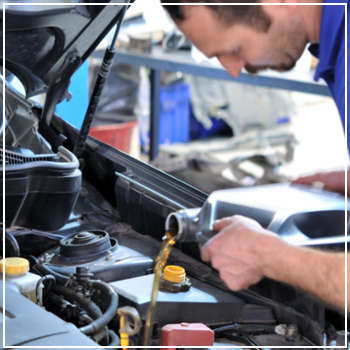 When it comes to car maintenance, most people think about oil changes, tire rotations, and checking air filters. But how often do you actually consider the health of your transmission? It's easy to overlook, but neglecting it can lead to expensive repairs down the road.
When it comes to car maintenance, most people think about oil changes, tire rotations, and checking air filters. But how often do you actually consider the health of your transmission? It's easy to overlook, but neglecting it can lead to expensive repairs down the road.
Your transmission is a vital part of your vehicle, and its condition directly affects how well your car performs. As your mileage increases, so does the risk of transmission failure. So, what should you be doing to keep it running smoothly?
Common Causes of Transmission Stress
Several factors can put strain on your transmission system. One of the biggest is heat. You might notice this when your car struggles going uphill. In such cases, manually downshifting to a lower gear can help increase RPMs and reduce stress. If you start experiencing gear slipping or hesitation, it’s time for a professional inspection.
Another common source of stress is frequent braking. City driving with constant stop-and-go traffic can take a toll on your transmission. To reduce pressure, try to anticipate stops and use your brakes more gently. Also, when parking on an incline, always engage the parking brake. This helps relieve pressure on the parking mechanism and prevents unnecessary wear over time.
Transmission Fluid Maintenance
If you take your car to a reliable mechanic, they’ll likely ask about your transmission fluid. For automatic vehicles, it’s recommended to change the fluid every 15,000 miles. But even if you're not at that mark yet, it's a good idea to check the fluid level yourself.
Look at the dipstick for signs of discoloration—dark, burnt-looking fluid could indicate overheating or contamination. Also, check for any leaks under your car. A small leak can quickly turn into a big problem if ignored.
During your service appointment, you may be asked whether you want a fluid drain or a full flush. Here’s the difference:
- Drain and Fill: This is the standard fluid change. The old fluid is drained out and replaced with new fluid. Over time, sludge and debris can build up in the system, which can affect performance.
- Flush: A transmission flush is designed to remove sediment and old fluid from deep within the system. However, it’s typically only needed every 50,000 to 100,000 miles. Too frequent flushing can actually harm your transmission.
Manual Transmissions: Simpler and More Reliable
For drivers with manual transmissions, maintenance tends to be less complicated. These systems have fewer moving parts compared to automatics, which means they’re generally more durable and require fewer repairs. That said, regular maintenance is still important.
It’s recommended to change the fluid every 15,000 miles or as specified in your owner’s manual. Keeping up with this simple task can help prevent costly breakdowns and extend the life of your vehicle.
Whether you need routine maintenance or a full transmission service, DaSilva’s Auto Body is here to help. Don’t wait until it’s too late—schedule an appointment today and keep your car running smoothly for years to come.
Compressed activated carbon filter element, Bulk activated carbon filter, carbon filter, activated carbon filter, activated carbon hepa filter
Xinxiang Zhike Machinery Equipment Co.Ltd , https://www.zhikefilter.com
![<?echo $_SERVER['SERVER_NAME'];?>](/template/twentyseventeen/skin/images/header.jpg)